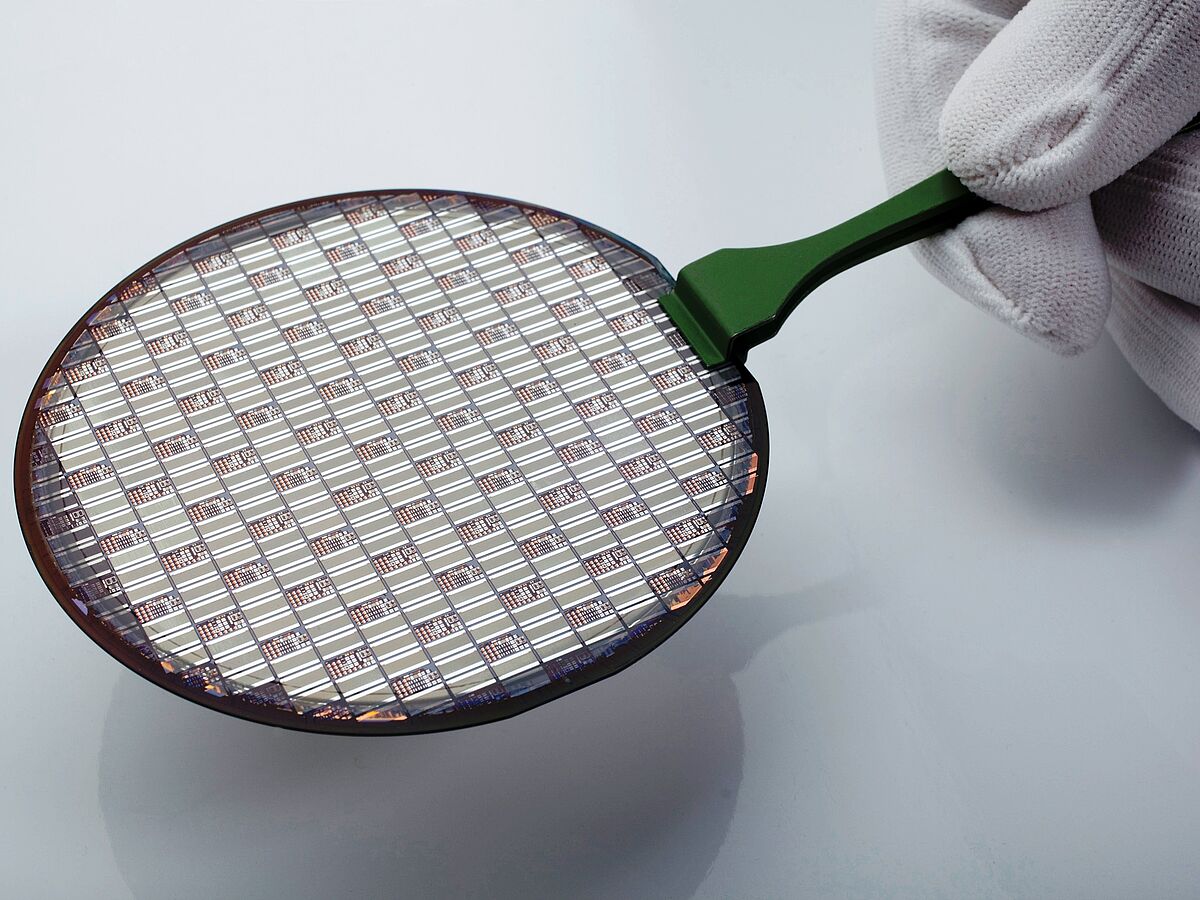More efficiency for power electronics
Under the auspices of the Ferdinand-Braun-Institut, the EU project HiPoSwitch has now been launched. The project aims at more compact and more powerful energy converters which are used, for example, in information and communication technology and solar inverter technology. The activities cover the whole value added chain, from GaN power device development to industrial application.
Low energy consumption and high output powers are the core requirements for modern power converter systems. The systems should protect natural resources and cope with the increasing power consumption in communication infrastructure required for further in-creased data rates. Power transistors are the elementary devices in electronic power con-vert¬ers transforming continuous and alternating current into the effective voltages used by the systems. Such transistors can be found in almost every technical device; in the field of information and communication technology, for example, they play a decisive role in mobile communications base stations. Further application fields are AC/DC power sup¬plies for computers, networks and data storage as well as solar converters, electric vehicles and hybrid cars.
Over the next three years, the EU project HiPoSwitch, which is coordinated by the Berlin-based Ferdinand-Braun-Institut, is focusing on novel gallium nitride-based transistors. They are the key switching devices which shall ensure increased efficiency in future power converter systems and shall require less volume and weight along with enhanced performance. Usually, the efficiency of present systems is largely limited by the active components used. Nowadays, they are mostly based on silicon (Si) which has now advanced to the point that the material itself is basically at its limits. Silicon carbide, on the other hand, is rather expensive and will thus prevent more widespread applications. With its superior material properties, gallium nitride (GaN) promises to be a suitable material for power switching. It is the basis for power switches operating at significantly higher frequencies without suffering from major switching losses. This is due to the drastically lower on-state resistance of GaN power transistors, combined with considerably reduced in- and output capacitances. The increase of switching frequency has also consequences for the passive components as the volume of inductors, current transformers and capac-itors can be significantly reduced. Thus, the whole assembly itself becomes smaller and more light weighted. The transistors will be built up on cost-efficient silicon substrates and therefore become extraordinarily attractive from an economic point of view. In the long run, they will combine significantly improved technical properties with comparably low costs.
The joint project has a total budget of 5.6 million Euros and is funded by the European Community with nearly 3.6 million Euros. Eight European project partners provide a portfolio of complementary competencies covering the complete value added chain, from research and development (Ferdinand-Braun-Institut, Leibniz-Institut fuer Hoechst-frequenz¬¬technik (FBH); Slovak Academy of Sciences, Institute of Electrical Engineering; Vienna University of Technology; University of Padua) to industrial application (AIXTRON SE, Artesyn Austria GmbH & Co. KG, EpiGaN, Infineon Technologies Austria AG). After project completion, GaN power transistors and 200 mm GaN-on-silicon substrates will be commercially available and marketed world-wide.
Closely intertwined: device development and technology transfer to industry
Throughout the project, normally-off GaN power transistors in vertical device architecture will be jointly developed by the German research institute FBH and Infineon Technologies Austria. Processing will be carried out mainly on GaN-on-Si wafers provided by EpiGaN but also benchmarked against GaN-on-SiC epitaxial wafers delivered by FBH. This work package aims at rapidly transferring the process modules from FBH to the high-volume process line at Infineon. Explorative concepts towards novel normally-off power transistors and devices operating, for example, at high temperatures up to 250°C will also be considered, predominantly at the Technical University Vienna and the Slovak Academy of Sciences in Bratislava. Thus, the basis for further technological improvements in the future will already be established during the project. All device developments are continuously supported by intensive reliability testing and failure mode investigations. In this connection, particularly the University of Padua contributes with its comprehensive experience in GaN device reliability and failure mechanisms.
In parallel to the device developments, the industrial partners concentrate on transferring the technology developed to a high-volume production environment: The Belgian company EpiGaN focuses on 200 mm GaN-on-Si epitaxy developments whereas the German corporation AIXTRON sets the prerequisites for high-volume epitaxy by optimizing the respective growth reactors. Infineon Technologies Austria AG evaluates the developed transistor concepts and the GaN-on-Si wafers from EpiGaN in their process line. Artesyn Austria will finally demonstrate the capability of the newly developed technology by building a highly efficient kilowatt class inverter system to be implemented, for example, in new-generation base stations for mobile communications.
Please contact us if you need any press pictures or visit our website for further images: www.fbh-berlin.com/press/download-center. All images are copyrighted.
Contact:Weitere Informationen: |


